Millions of people worldwide dream of “reaching their dream,” more than any religion. And yet, most often we can only describe our goals but not our dreams, because like the dreams we dream our life’s dreams happen. We realize that we reached our dream only when we experience it. The following account is the story of such an uncovering.
“Twenty years from now you will be more disappointed by the things that you didn’t do than by the ones you did do. So throw off the bowlines. Sail away from the safe harbor. Catch the trade winds in your sails. Explore. Dream. Discover.” – Mark Twain
Inspired by the many travel and adventure books I read as a child I decided pretty early on that I didn’t need a walk-in closet full of clothes, a spacious apartment, or a sharp-looking car to be happy; my big goal in life was to travel. Ideally, I wanted to try to see the whole world. Since, at the time, I lived in Vienna in the center of Europe, most European destinations were just a train ride away.
Once I had seen most of Europe I expanded my goals to include the legendary destinations all travelers talked about with that certain timbre of respect. One of them was Tibet, “The Roof of the World.”
At the age of eleven, I had met Heinrich Harrer, the former tutor of the Dalai Lama and author of Seven Years in Tibet, when he toured my home country Austria with his book. At his lecture I had seen slides of a beautiful, vast, and wild country with a religion and spirituality I did not understand, but which seemed incredibly profound. I got to shake Harrer’s hand and he signed my copy of his book. Then, he asked me if I was going to visit Tibet some day. Even though I was quite young I felt that replying “no” was not an option.
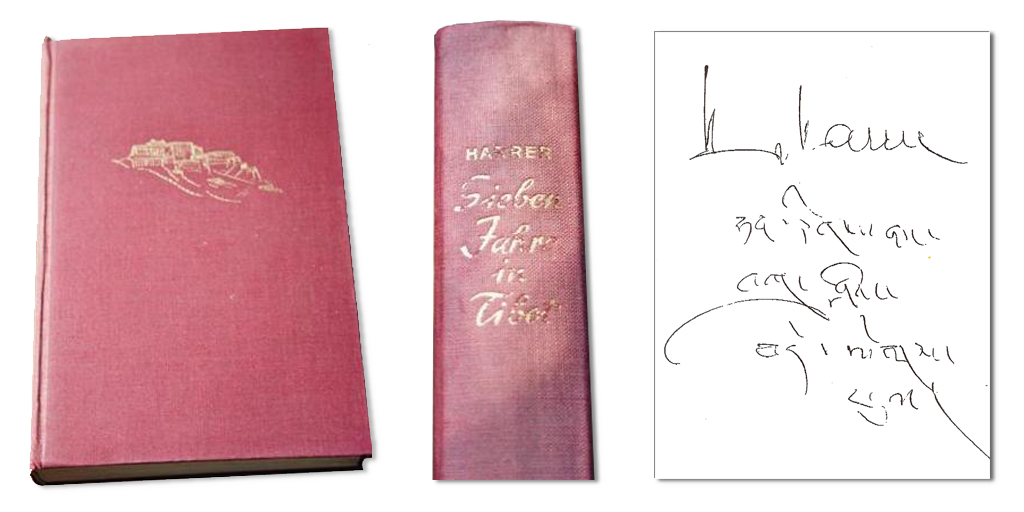
“Hurry up,” the great man replied, “the Chinese are going to change Tibet.”
To be sure, visiting Tibet was not an easy task. Flying there was quite costly and there was no guarantee that I’d make it to Lhasa. Since 1965 when Tibet became an autonomous province of China the Chinese government controlled who was allowed to enter Tibet and when. I had heard of travelers who even had plane tickets to Lhasa but their flights were cancelled, their money returned, and that was the end of their adventure. By 1979, when the Chinese first allowed foreigners to travel to Lhasa, only 1,200 “strangers” had ever seen the city.
Finally, in the fall of 1986 an opportunity came up to go on a six week vacation from shortly before Christmas till the end of January 1987. It was a bit of a scary thought to stay away from home so long. At the time, I was working as a movie production manager, I was a freelancer. In a worst case scenario, I’d come back from Asia and not have a job for weeks in a row. Pondering my options I recalled how my dad used to say, “the light doesn’t get any greener,” every time he saw a driver not starting to drive when the traffic light turned green. Right then, my situation looked as good as it could. I had one job lined up for March and April the following year. Though a million things could go wrong with that, clearly – “the light could not get any greener.” So, I resurrected and modified an old plan to travel with the Trans-Siberian Railway through Russia to Beijing and make my way to Tibet from there.
The fact that the Chinese opened and closed Tibet at will: either allowing tourists in… or just ‘not’ was not the only problem. Though it seemed likely that Chinese officials wouldn’t worry about a lone traveler who wanted to visit Tibet during winter, the weather could also be a factor. Tibet’s capital, Lhasa, is at an elevation of 12,000 feet. Who knew if planes could make it up there, in the middle of winter.
But I was determined and started my trip on December 21, 1986, traveling exactly like I had planned – Vienna – Kiev – Moscow – Irkutsk – Harbin – Beijing – Chengdu – and then – Lhasa, Tibet.
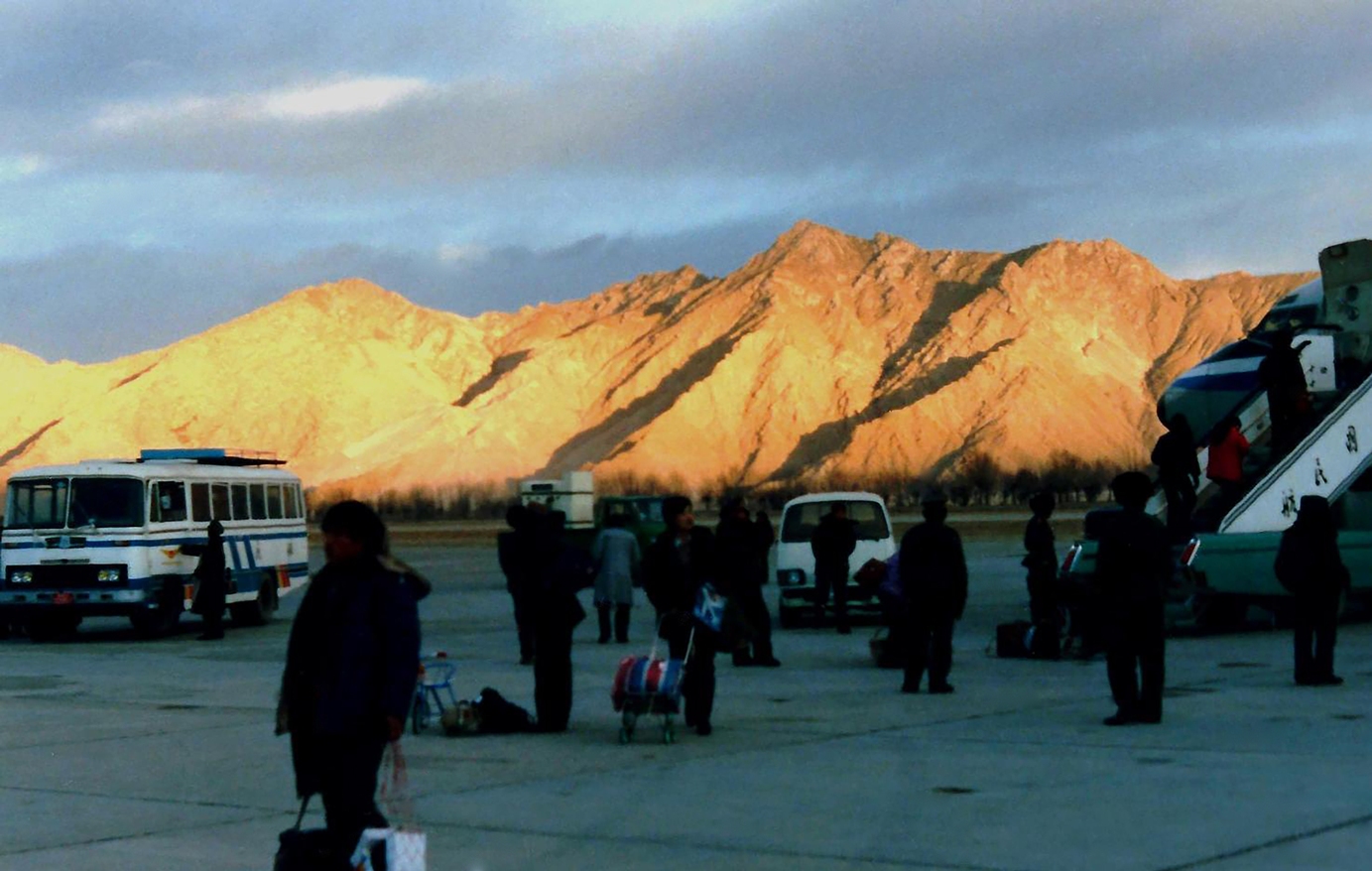
While on the bus getting transported from the airport to the city, a trip that took more than four hours, I saw a few pilgrims prostrating themselves to their destination – their holy city. That’s when it first hit me that I had arrived at a place like no other. Though I had read that Buddhist pilgrims from far away parts of the country spent years covering the entire distance body length by body length until they reached Lhasa, actually seeing the pilgrims put me in my place – I knew nothing about believing, devotion, and true faith. Here I was a beginner. Tibetans knew something I did not even know existed.
Lhasa turned out to be a mesmerizing city in a barren landscape full of breathtaking spiritual energy.
Because it was January, very few tourists arrived with me. The city itself was a slightly modernized version of Heinrich Harrer’s Lhasa. Buddhism was omnipresent. There were many depictions of Buddha sitting on a lotus flower painted on rocky cliffs. Prayer flags were flying everywhere. At this altitude the air is cleaner, the light is brighter, and every impression is more intense.
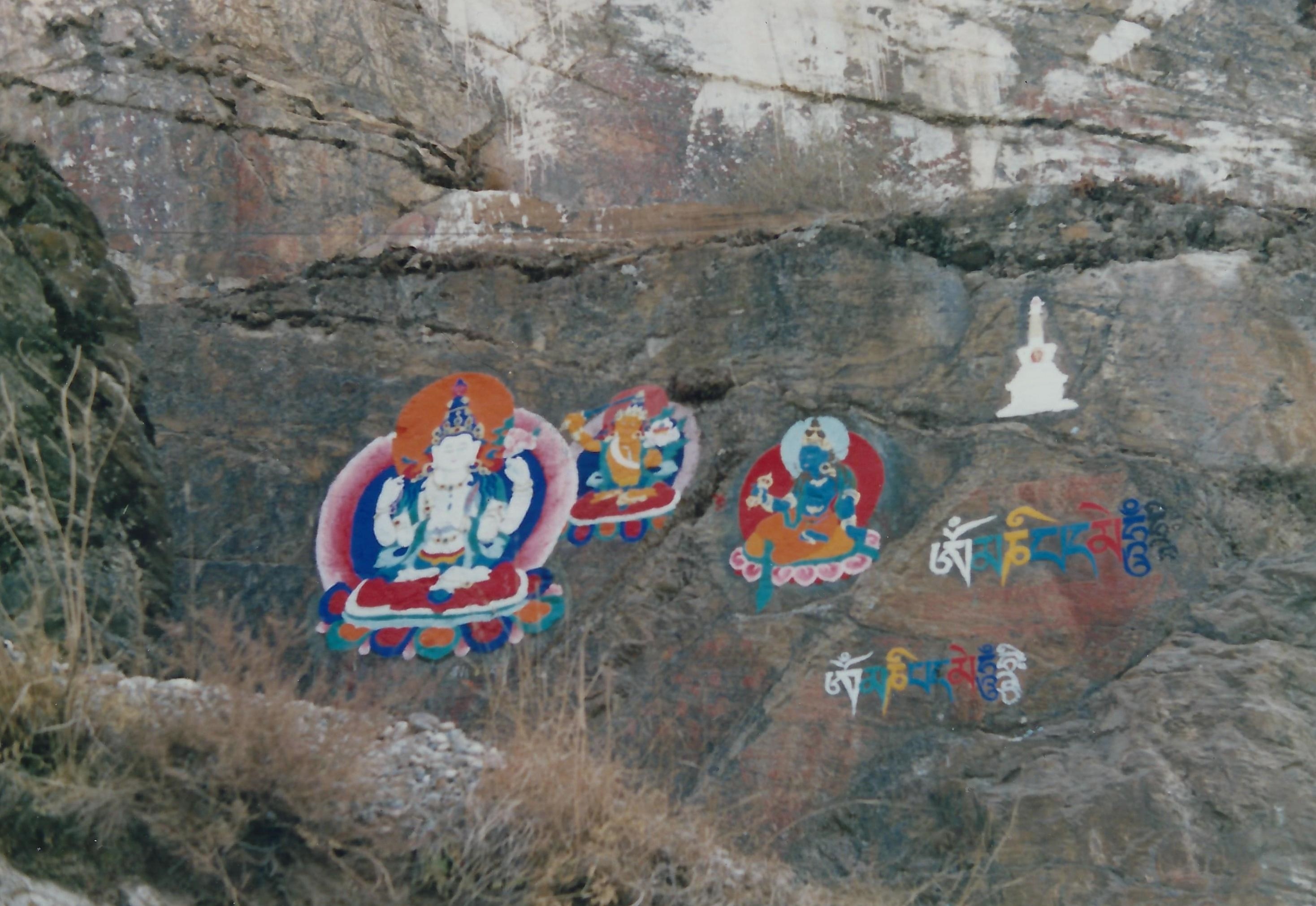
Surprisingly, a most striking moment came on my first morning in Lhasa. Arriving in Tibet the day before had meant that I flew to an elevation of about 12,000 feet in only two hours. Thirty minutes later I was suffering from altitude sickness. Because there was no transportation I had to walk from the bus terminal to my hotel, carrying my 40 pounds of luggage. It took me one hour to get there and multiple stops to catch my breath.
The hotel was of rectangular shape with an outhouse with showers and toilets in the center of the courtyard. I was informed that hot showers would only be available between 8:00 and 10:00 a.m. Because I was too exhausted to make another step I took a room on the second floor. Then I slept like a baby.
Early the next morning I awoke when I heard murmurs outside my door, on the balcony. I sensed something special was going on out there, jumped out of my bed and grabbed my camera. Then I opened the door and there it was – the picture which would be burned into my memory forever. It’s unbelievable beauty and symbolic character were not to be overlooked.
Like from everywhere else in town, I could see the white Potala Palace on its hill. The magnificent symbol of Buddhist religion and spirituality towered over the needy buildings in the foreground. The early morning sunrays lit up the Potala’s white walls in a glowing red. Indeed it looked as if the Potala Palace itself was in flames.
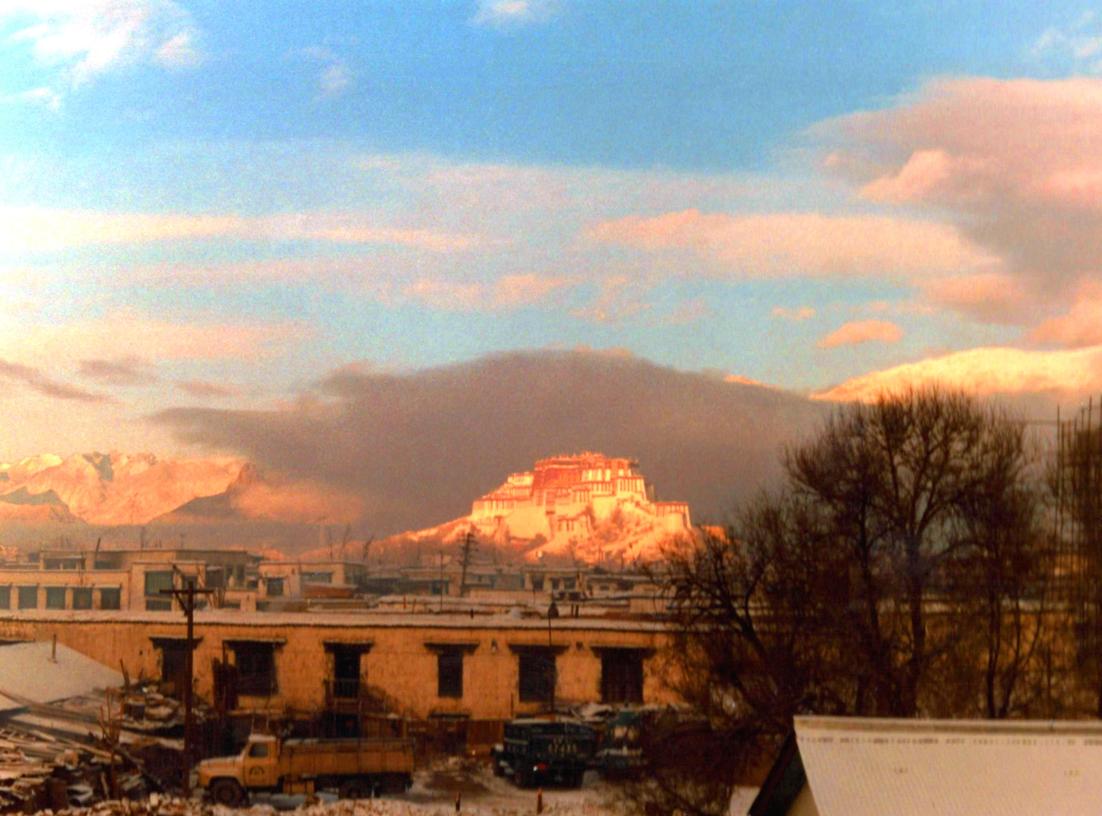
Right behind the Potala stood a dark gray cloud and behind that was the ever-so-beautiful blue morning sky. I lifted my camera and clicked the button. Not a minute later the sun’s rays were strong enough that the red coloring of the Potala’s walls faded. Just in time I had snapped a picture which was symbolic for religion and culture in Tibet – a dark cloud was hanging over its intense and quiet beauty. To me and maybe to the Tibetans who stood next to me it felt as if Buddha himself was sending a warning sign that the Tibetans’ way of life was threatened.
Because I could only stay for four days, I was determined to make the most out of my visit. That was not always easy. Comfort was nonexistent. Like most other tourists I downed aspirins as blood thinner to fight altitude sickness. I lived off dough-cakes baked on a street vendor’s red-glowing cast-iron oven and Yak-butter tea. Gaining strength every day I was finally ready to walk up to the Potala where I was going to visit the Dalai Lama’s private chambers.
As surprising as this may sound, I did not have any expectations. Though I had seen Harrer’s black and white photographs of Tibet I had never seen the inside of the Potala, maybe because in the fifties photographic film wasn’t sensitive enough to capture pictures in rooms lit by yak-butter lamps or because then people didn’t take pictures inside places of worship.
Only half a dozen other “strangers” passed through the entrance gate with me. Within minutes we lost sight of each other inside the huge palace. In prayer rooms monks smiled friendly at me but I sensed they were in another world and we did not connect. In a way, meeting them was humbling. Even though I was that girl who could live without a walk-in closet full of clothes and be just fine, next to the humble, pious monks I felt like a vain person.
There were no guides or signs but eventually I made my way to the top floor and found the Dalai Lama’s quarters quite easily. The room’s aura was absolutely mesmerizing.
The windows were open and bright light filled the room. The Dalai Lama’s former golden throne sparkled in the sunlight, outshining the beautiful mural in the back, not in a rich or golden way but seeming to say, “his Holiness sat right here and thought about how to help the world become a more compassionate place.” And, then there were the sheer, orange curtains. The steadily blowing winds had pulled them outside where they flapped like prayer flags forming a connection to heaven. To me it appeared as if they transmitted a message, in code; I had arrived at the place where everybody could meditate with ease.
*
In Tibet, time seemed to be measured by the clacker of metallic prayer mills, not only for Tibetans but also for travelers like me. I wandered through the Jokhang Temple where I studied the faces of incredibly peaceful statues of Buddha, visited the market place to watch the people do their bidding and trading, and went down to the river where I sat on the bridge and waited for more pilgrims to arrive. The only place where I’d meet foreigners was the British Tea House, which had been set up or built by the British but wasn’t British in any way at all. By the time I had to leave I was certain that I would return. In fact, I had big plans. As soon as I could manage to take a two to three months vacation I’d return. Maybe I could even cross the Gampala pass and make it to Shigatse, Tibet.
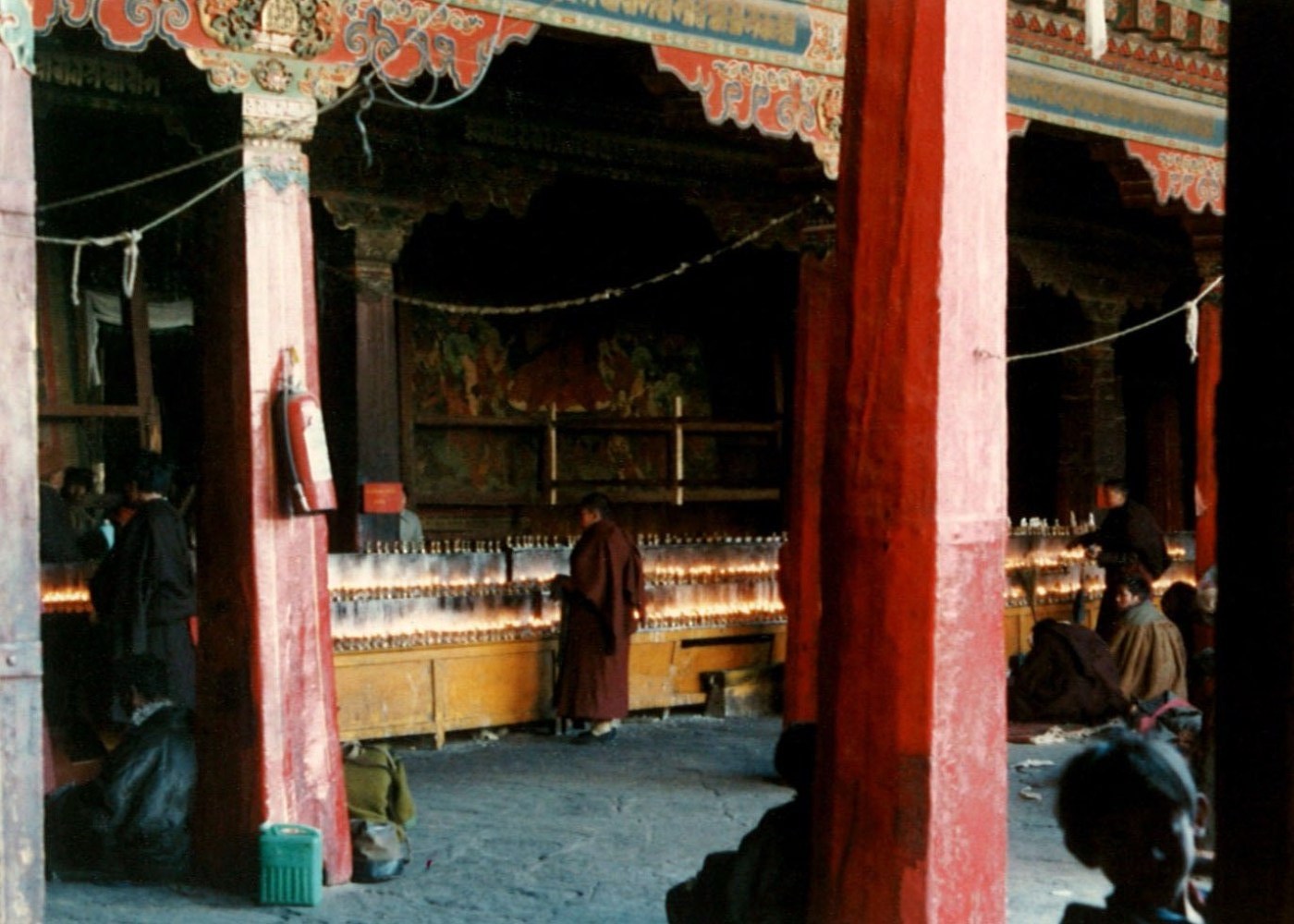
The last leg of my journey led me to Hong-Kong from where I planned to fly back to Europe. The difference between Tibet’s bare vulnerability and Hong Kong’s pulsating life as a center for finance and business could not have not have been any greater. Seeing Hong-Kong I could guess what power China would develop into in 1997, when it would resume sovereignty of this city. I was certain that China would not change Hong-Kong, but use it as a door to the West.
*
China’s GDP would keep growing and in 2006, nine years after China took back Hong-Kong, the Qinghai–Tibet Railway would be opened. Goods could now be brought easily into Tibet. In addition to that, trains are equipped with two oxygen supply systems which allow tourists to avoid issues with altitude sickness.
Since 2012, every day up to 2,300 mostly Chinese visitors are being ushered through the Dalai Lama’s bedroom, where I had meditated, alone by myself. Foreign tourists are being supervised by Chinese tourists guides and are not allowed to experience Tibet in synch with their inner needs and questions. A huge banner with the line “May the great Communist Party last ten thousands of years” hangs above the main entrance gate of the former home of the Dalai Lama. Heinrich Harrer’s Tibet and “my Tibet” is gone.
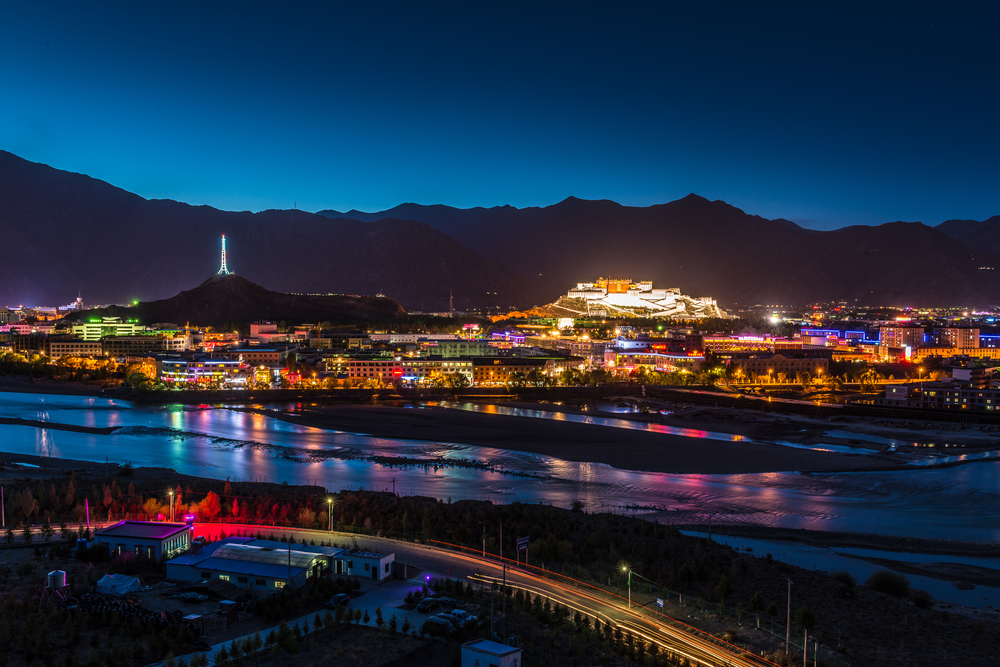
Just like Mt. Everest 280 miles to the west-south-west, Lhasa has become a business opportunity.
*
Especially, when I tell spiritual people that I got a chance to meditate in the Dalai Lama’s bedroom, they almost faint while exclaiming “Oh my God, I can’t believe that… You made a dream come true… ”
Nothing could be further from the truth. At the time I was twenty-four years old, a tough cookie who worked in the movie industry sixteen hours per day. I also believed and was invested in the idea that if we really want something we’ll make it happen, which is what I did. Because I did not even expect to have an otherworldly experience, I scheduled only a five-day stay in Tibet and had to leave even though I didn’t want to.
It was being there and experiencing the serenity, spirituality, and peace of Tibet that opened up my interest in the teachings of Buddhism, and not the other way around.
*
The revelation I came to was – when we follow the right goals, personal or professional, they often turn into dreams come true as a matter of course.
*
Gisela Hausmann is the author of “Naked Eye-Opener: To Reach the Dream, We Must Forget About It.”


